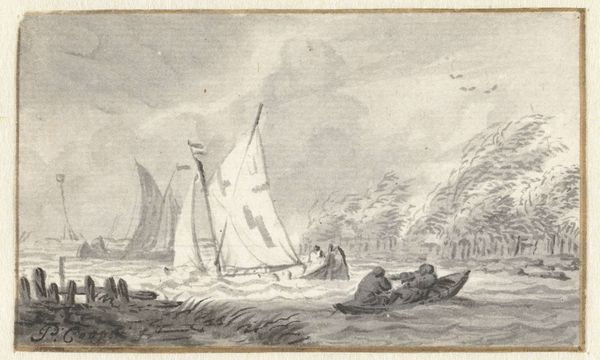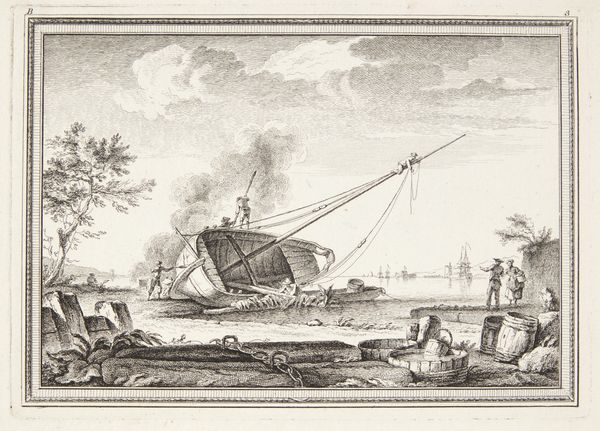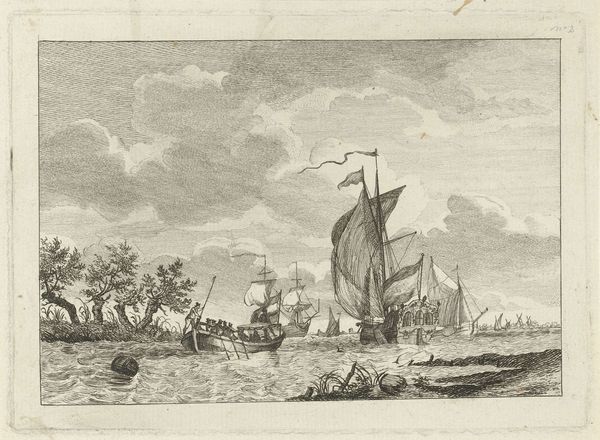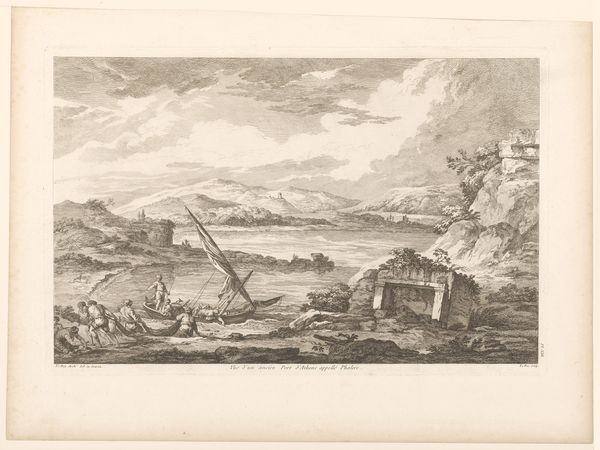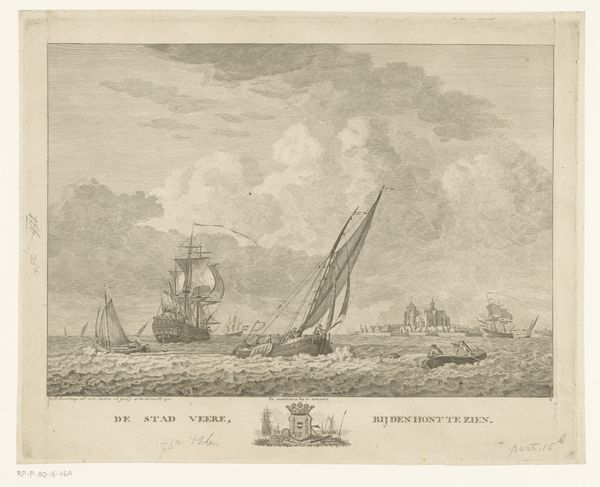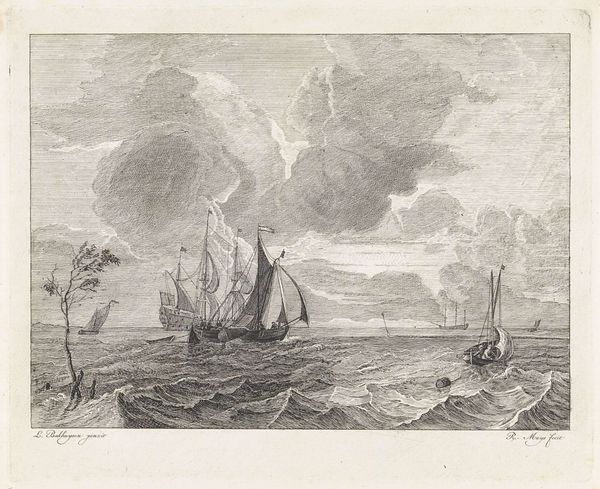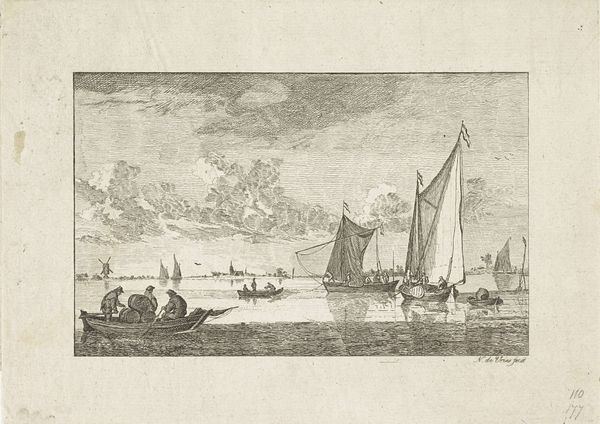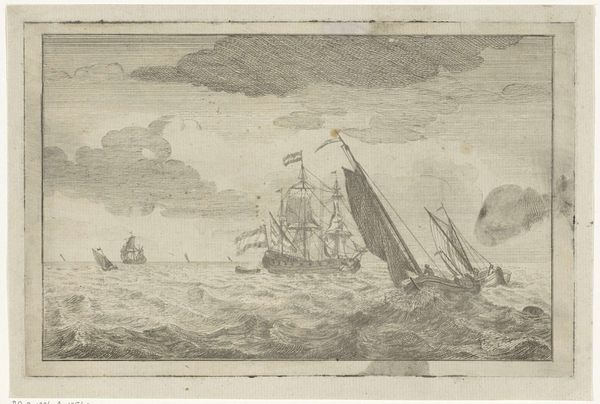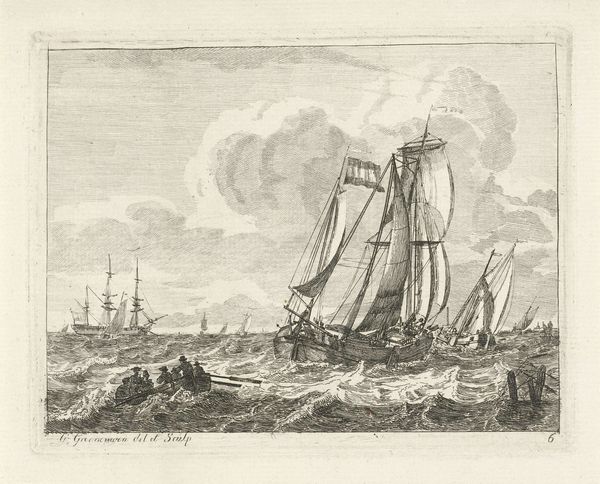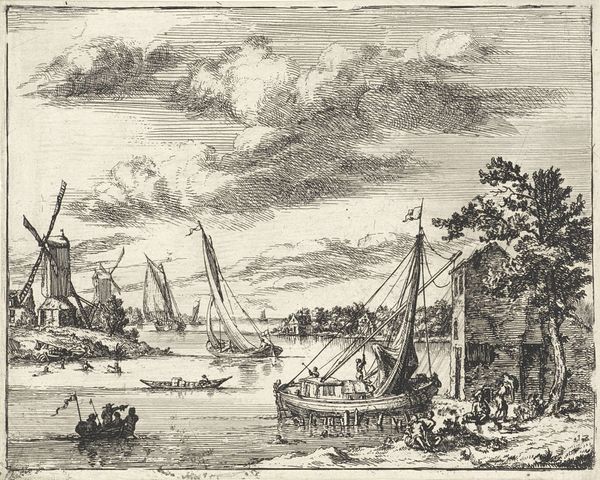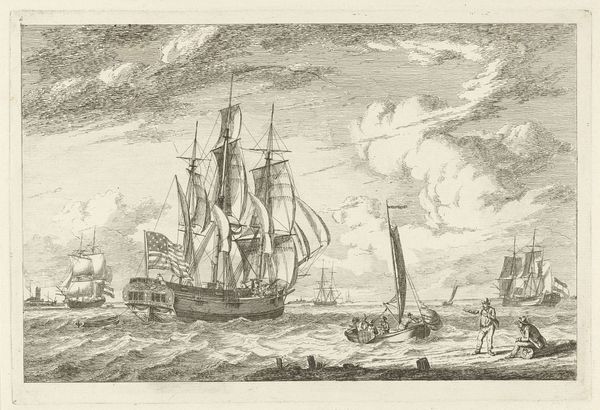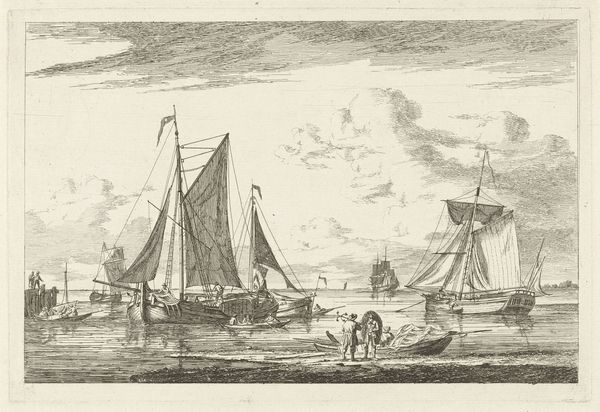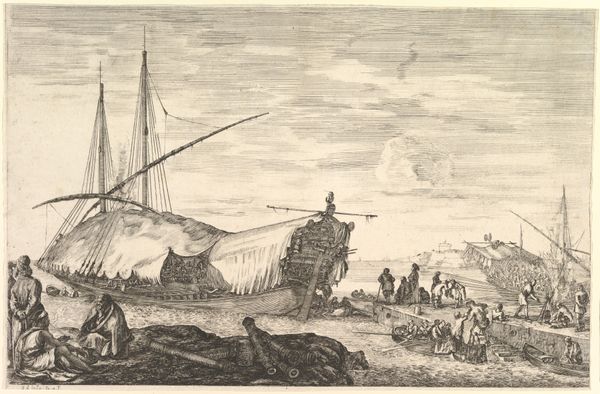
Dimensions: 131 mm (height) x 183 mm (width) (plademål)
Curator: Let's discuss this etching by Jeanne Francoise Ozanne, dating from 1750-1795, titled "Coastal Scene with a Ship being Keelhauled." It offers a fascinating glimpse into maritime practices of the time. Editor: My immediate impression is one of contrasting scales; the delicate rendering of the landscape against the massive grounded ship creates a visual tension, almost unsettling. The details, despite being etched, have a stark, utilitarian beauty. Curator: Indeed, Ozanne presents us with a scene that's both picturesque and documentary. Keelhauling was a brutal form of punishment or even ship maintenance. Placing this violent act within an otherwise serene coastal setting highlights the complexities of 18th-century maritime life. How does the choice of printmaking as a medium impact your interpretation? Editor: Well, etching allows for precise linear details, perfectly suited to illustrating the mechanics of the ship and the labor involved. It's not just about aesthetic pleasure, it's a way of recording knowledge, distributing information about naval technology and disciplinary practices to a wider audience. It underscores the practical role art played. Curator: Precisely, printmaking democratized images and ideas. Furthermore, the image circulates ideas about nationhood. As these images circulate they become a key way of understanding labor and social control and what behaviors are normalized at this moment in time. How might this image and the maritime context contribute to evolving social hierarchies? Editor: I see the act of keelhauling here also exposes power structures. Those performing the task on the boat compared to the onlookers suggests division of labour that highlights the existing inequalities. This division mirrors colonial exploitation; those who labored rarely received recognition. Curator: Exactly. Maritime power was central to colonial projects and maintaining social order back home. Ozanne, perhaps inadvertently, provides us with an insightful study of these intersections through the lens of labor and power. Editor: Ultimately, Ozanne's print challenges traditional art history. It shifts us away from decorative notions, reminding us of art’s connection to societal norms and even less glamorous, necessary jobs that uphold a system. Curator: An excellent observation; this work, while seemingly simple, carries significant weight when we consider its historical, social, and political implications. Editor: Absolutely. It invites a new understanding of visual histories by centering social narratives that move beyond typical period definitions.
Comments
No comments
Be the first to comment and join the conversation on the ultimate creative platform.
